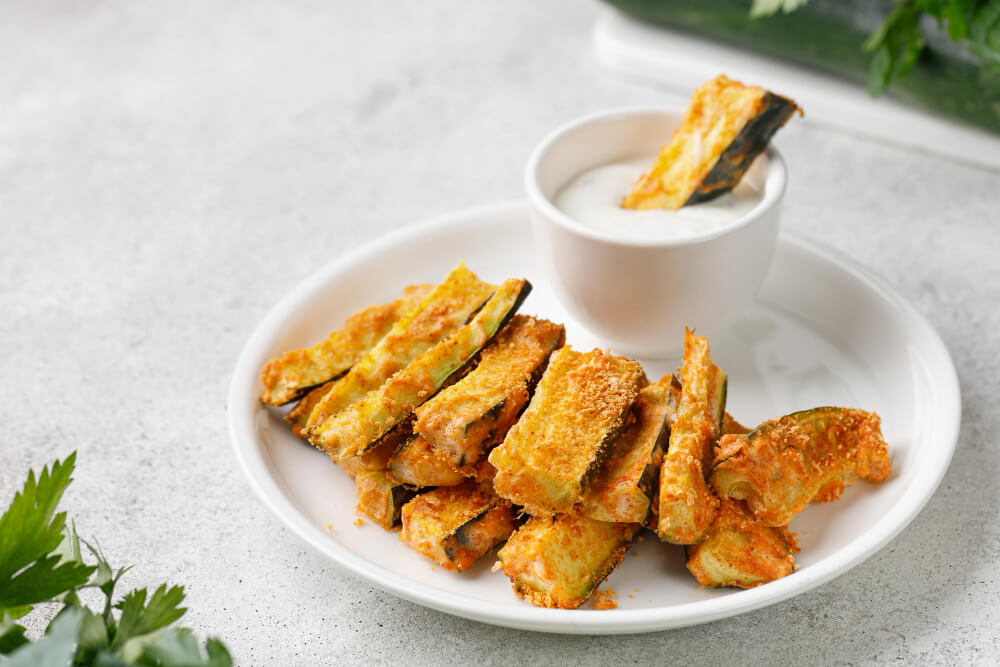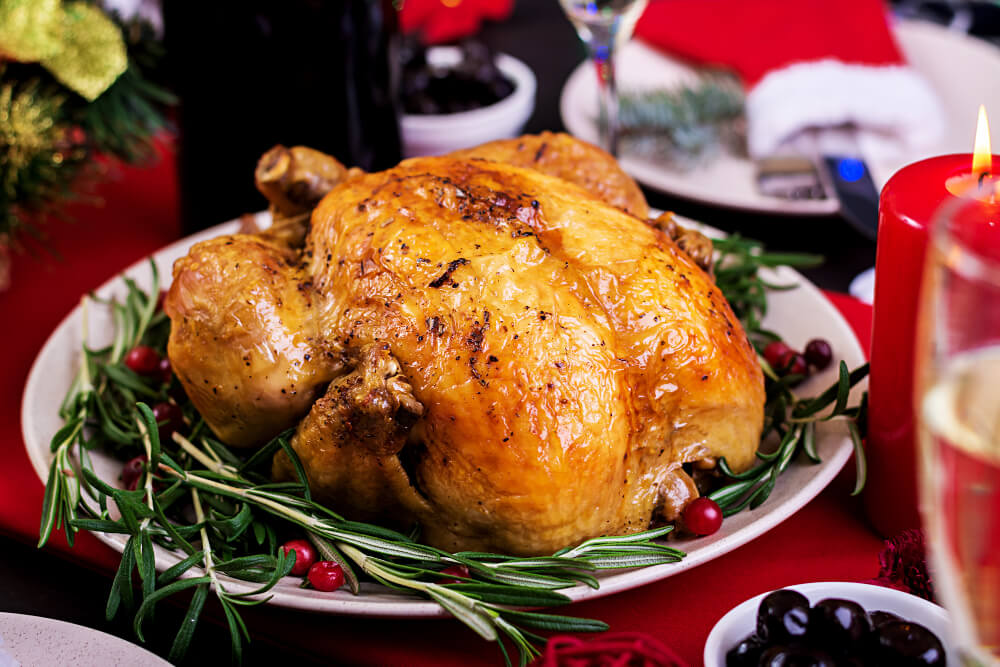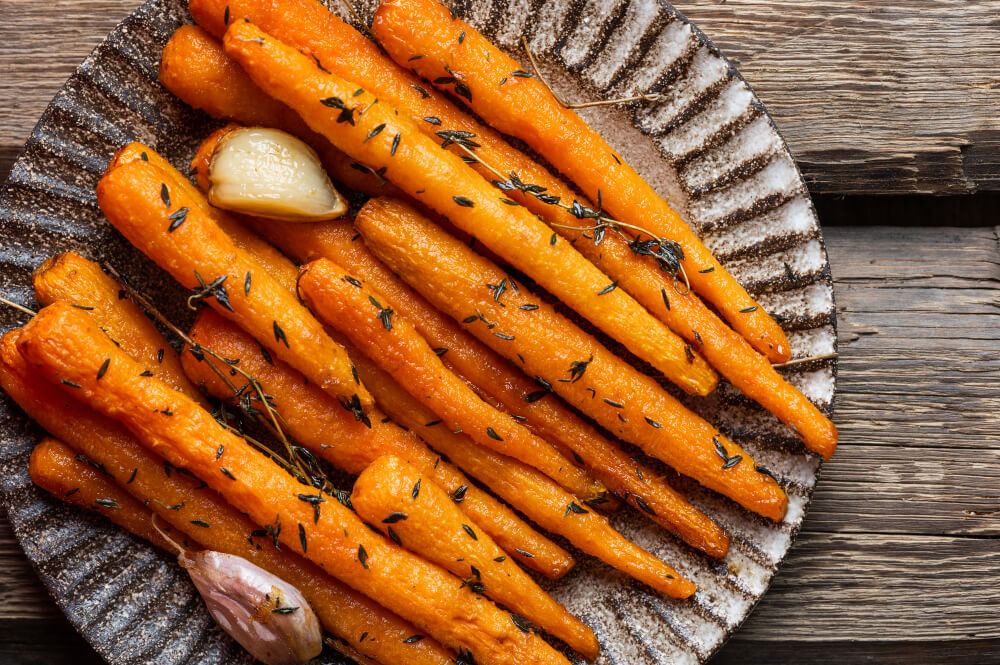
Are you ready to experience the tropical delight that is a freshly cut pineapple? Well, you're in luck! Today, we're going to explore the most efficient way to cut the pineapple, so you can effortlessly make pineapple chunks and savor their juicy sweetness.
With a sharp chef's knife in hand, we'll guide you through the proper lengthwise technique and show you the best way around the pineapple, ensuring that you can enjoy this exotic fruit without wasting any of its goodness.
Did you know that pineapple contains bromelain, a powerful enzyme with numerous health benefits?
If that doesn't tempt you to read on and master the art of cutting pineapple, we don't know what will! So, grab your knife, and let's embark on this tantalizing journey together.
How to Cut a Pineapple Step-by-Step Guide
In this step-by-step guide, we will explore three different methods to cut a pineapple. Each method offers a unique way to enjoy this delicious tropical fruit.
Method 1: Pineapple Rings
Pineapple rings are a visually appealing and versatile way to enjoy this delicious tropical fruit. Whether you're using them as a garnish for cocktails or grilling them for a sweet and smoky treat, pineapple rings are the perfect addition to your culinary repertoire. In this method, we'll focus on how to create beautiful, evenly sliced pineapple rings that will impress your family and friends. We will guide you through the process of working around the core, cutting off the top and bottom of the fruit, and using a small paring knife to slice the pineapple into rings.
Instructions:
-
Start by washing the whole pineapple and placing it on a stable cutting board. This will ensure a clean and safe cutting surface.
-
Stand the pineapple on its side and use a sharp knife to carefully cut off the top and bottom of the pineapple. This will create a stable base for the next step.
-
Stand the pineapple upright on the cutting board. Using your knife, follow the natural curve of the pineapple to remove the outer skin in long, smooth strokes. Make sure to remove all of the skin and any remaining "eyes."
-
Once the pineapple is peeled, lay it on its side on the cutting board. This position will make it easier to create even slices.
-
Use a small paring knife to slice the pineapple into even, circular rings. The thickness of the rings is up to your personal preference; however, a good rule of thumb is to aim for a thickness of about 1/2 inch.
-
After slicing the pineapple, you'll need to remove the tough core from each ring. Place a ring flat on the cutting board and use a small round cutter or the tip of your paring knife to carefully cut around the core, creating a hole in the center of the ring.
-
Repeat the core removal process for each pineapple ring.
With these steps, you'll have a beautiful stack of pineapple rings ready to be enjoyed on their own or incorporated into a variety of dishes. The perfect combination of sweet and tangy, pineapple rings are a delightful addition to any meal.
Method 2: 
Another way to cut a pineapple is into bite-sized chunks, perfect for adding to fruit salads, smoothies, or as a topping for yogurt and ice cream. Pineapple chunks also work well in savory dishes, such as stir-fries or on skewers for grilling. In this method, we'll explore how to create pineapple chunks while working around the pineapple core and ensuring minimal waste. You'll learn how to use a sharp chef's knife to break down the entire pineapple, making the most of this delicious fruit for all your pineapple recipes.
Instructions:
-
Begin by washing the whole pineapple and placing it on a stable cutting board.
-
Stand the pineapple upright and use a sharp chef's knife to slice off the top and bottom of the pineapple. This creates a stable base for the next step.
-
With your chef's knife, carefully cut away the pineapple skin, following the natural curve of the fruit. Be sure to remove all the skin and any remaining "eyes."
-
Lay the pineapple on its side and cut it in half lengthwise, straight through the core. You'll now have two long halves, each with a part of the pineapple core running down the middle.
-
Turn the pineapple halves so the flat side is down on the cutting board, and cut each half lengthwise again, creating four quarters.
-
To remove the pineapple core from each quarter, use your chef's knife to make a clean, angled cut along the edge of the core. This will separate the core from the fruit, leaving you with pineapple quarters free of the tough, fibrous center.
-
Now that the core has been removed, cut each pineapple quarter crosswise into bite-sized chunks.
-
You can now use your pineapple chunks in various recipes or enjoy them as a delicious, healthy snack.
Method 3: Pineapple Spears
For those who prefer a more elegant presentation, pineapple spears make an excellent choice for serving this tropical fruit. These long, wedge-shaped slices are perfect for dipping into sauces or enjoying on their own. With their diagonal, top to bottom cut, pineapple spears offer a fun and visually appealing way to enjoy this spiky, prickly fruit. In this method, we'll guide you through using a knife to create beautiful pineapple spears, and how to make thin slices while carefully removing the skin.
Instructions:
-
Begin by washing the whole pineapple and placing it on a stable cutting board.
-
Stand the pineapple upright and use a small paring knife to carefully slice off the top green crown and the bottom footer. This creates a stable base for the next step.
-
Place the pineapple upside down and with your paring knife, gently cut away the skin, following the natural curve of the pineapple. Be sure to remove all the skin and any remaining "eyes."
-
Lay the pineapple on its side and cut it in half lengthwise, straight through the core. You'll now have two long halves, each with a part of the pineapple core running down the middle.
-
Turn the pineapple halves so the flat side is down on the cutting board, and cut each half lengthwise again, creating four quarters.
-
To create the pineapple spears, lay each quarter on its side and make diagonal cuts along the edge of the core to remove it. This will leave you with pineapple wedges free of the tough, fibrous center.
-
Now that the core has been removed, trim any remaining bits of skin or "eyes" from the pineapple wedges using your paring knife.
How to Buy the Best Pineapple Every Time

Pineapple is a delicious tropical fruit, rich in vitamins and minerals, that can elevate any dish you're making. But selecting the best pineapple every time can be challenging, especially with their tough, spiky exteriors. To ensure you get a ripe, juicy, and flavorful pineapple every time, follow these simple tips and tricks.
Check the color
Ripe pineapples tend to have a vibrant golden-yellow color, particularly near the base. While the color may not be consistent across the entire fruit, it should have a noticeable golden hue. However, it's important to note that some pineapples continue to ripen after being harvested, so a green pineapple might still be delicious if allowed to ripen at home. Avoid pineapples that are too green or have a dull, brownish appearance, as they may be underripe or overripe, respectively.
Smell the pineapple
A ripe pineapple will have a sweet, fragrant smell at the base, indicating that it's ready to eat. Overripe pineapples tend to have an overly sweet, fermented odor, while underripe pineapples may not have any noticeable smell.
Feel the texture
Gently press the pineapple flesh to assess its firmness. A ripe pineapple should yield slightly under pressure, while an underripe pineapple will feel hard and unyielding. Overripe pineapples may feel too soft or even mushy. However, avoid pineapples with excessively soft spots, as they could indicate spoilage or damage.
Check the leaves
The leaves on top of the pineapple should be green, healthy-looking, and firmly attached to the crown. While the occasional brown or dried-out leaf is normal, the majority of the leaves should be vibrant and fresh. A pineapple is ripe when its leaves can be easily pulled out from the top of the fruit.
Examine the shape and curvature
A ripe pineapple should have a uniform shape and curvature of the fruit. Uneven bulges or flat areas could indicate that the pineapple has not ripened evenly, which may affect its taste and texture.
Consider the size and weight
A heavy pineapple with a good size-to-weight ratio typically has a higher water content, which means it's likely to be juicy and flavorful.
By keeping these factors in mind, you can confidently select the best pineapple every time. Once you've chosen the perfect fruit, you can use various cutting methods, like corer or v-shaped cuts, to create pineapple rounds, spears, or chunks for your chosen dish. Whether you're preparing a refreshing salad, a mouthwatering dessert, or a savory main course, the right pineapple will add a burst of flavor and texture to any meal.
Remember that once a pineapple is cut, it won't continue to ripen, so it's crucial to select the best fruit at the store. Additionally, when cutting the pineapple, try not to lose too much flesh in the process, as this will maximize the amount of edible fruit you can enjoy.
How to Store Pineapple the Right Way

Selecting the perfect pineapple and knowing how to easily cut it are only half the battle; knowing how to easily chow to store it properly is essential to preserve its freshness, taste, and quality. Whether you've already cut the fruit or are waiting for the ideal ripeness, proper storage techniques can significantly impact the longevity and flavor of your pineapple.
In this guide, we'll explore the best methods for storing pineapple, both whole and cut, so you can enjoy its tropical goodness for as long as possible.
Whole Pineapple Storage
-
Assess the ripeness:Before storing your pineapple, determine its current ripeness level. If it's ripe and you don't plan on consuming it immediately, refrigeration is essential. For pineapples that still need some time to ripen, room temperature storage is appropriate until the pineapple is ready to cut.
-
Room temperature storage: If your pineapple must be ripened further, store it at room temperature (approximately 70°F) on a countertop, away from direct sunlight and heat sources. Ensure proper air circulation by keeping it upright and not stacking other items on top of it. Depending on the initial ripeness, it may take one to two days for the pineapple to reach its peak flavor.
-
Refrigerate: Once your pineapple is ripe, transfer it to the refrigerator to slow down the ripening process and prevent spoilage. Place the pineapple in the crisper drawer or on a shelf where it won't be crushed or damaged by other items. Whole, ripe pineapples can typically be stored in the refrigerator for up to five days.
Cut Pineapple Storage
-
Prepare the pineapple: To store cut pineapple, first use a sharp knife to slice the fruit, removing the top, bottom, and outer skin. Proceed to remove the eyes and core as needed. You can use a small cookie cutter to create pineapple rings or cut the fruit into spears, chunks, or other desired shapes.
-
Use an airtight container: To preserve the freshness of your cut pineapple, place it in an airtight container or resealable plastic bag. If possible, include some pineapple juice in the container, as it can help maintain the fruit's moisture and prevent it from drying out.
-
Refrigerate: Store the cut pineapple in the refrigerator for up to five days. Keep the container away from strong-smelling foods, as the pineapple may absorb their odors.
-
Freeze: For longer storage, consider freezing your pineapple. Lay the cut pieces on a parchment-lined baking sheet and freeze until solid. Once frozen, transfer the pineapple to airtight containers or freezer bags and store them in the freezer for up to six months. Thaw the fruit in the refrigerator or at room temperature before consuming.
By following these storage guidelines, you can ensure that your fresh pineapple remains delicious and ready to enjoy, whether you're waiting for peak ripeness or savoring the leftovers from a recent meal. Proper storage techniques will help you make the most of this tropical fruit, letting you indulge in its sweet, tangy flavor whenever the craving strikes.
Related Articles
- How to Cut an Avocado the Easy Way
- How to Cut a Papay the Easy Way
- How to Cut a Cantaloupe the Proper Way
- How to Cut a Dragon Fruit Like a Pro
- How to Cut Kiwi? Step-by-Step Guide on How to Cut a Kiwi
Conclusion
In conclusion, learning how to cut and store pineapple properly can make all the difference when it comes to enjoying this sweet, tangy fruit. From mastering the pineapple hack to skillfully cutting away the prickly skin and core, you'll be able to create delicious pineapple rings, chunks, or spears to elevate any dish.
With the right techniques, you can turn a seemingly intimidating fruit with a tough exterior into a delightful and versatile treat. So, don't hesitate to pick up a pineapple on your next grocery trip, and let your culinary creativity run wild.
Related Products You Might Like
A high-quality wooden cutting board is essential for cutting pineapple effortlessly and safely. At Mevell, we offer premium wooden cutting boards that provide a stable, durable surface for all your slicing needs. Our cutting boards are not only practical but also add a touch of sophistication to your kitchen.
By investing in a Mevell wooden cutting board, you can ensure a seamless pineapple cutting experience every time. Explore our range of cutting boards and elevate your culinary skills today.



